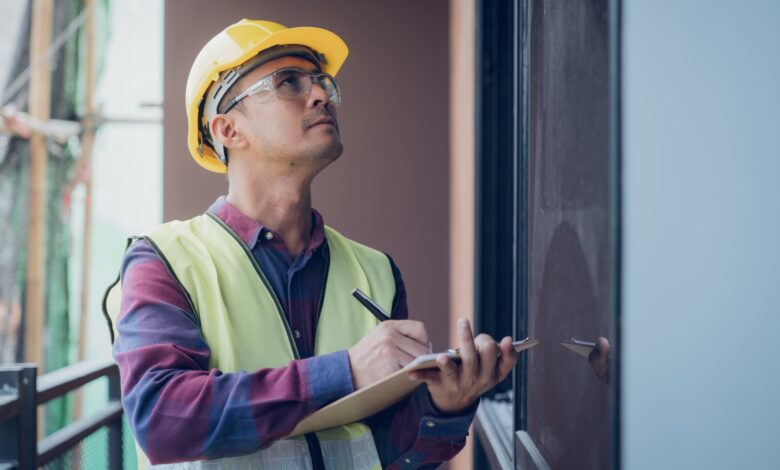
Whether you’re buying a new property, assessing an existing one, or planning renovations, a building inspection can save you time, money, and headaches down the road. But how do you know when it’s time to call in the professionals? In this comprehensive guide, we’ll explore the telltale signs that indicate a building inspection is in order.
The Importance of Building Inspections
Before we dive into the red flags, let’s first understand why building inspections are so crucial. A thorough inspection by a qualified professional can uncover hidden issues that may not be immediately apparent to the untrained eye. These can range from structural problems and electrical hazards to plumbing issues and pest infestations.
Failing to address these problems can lead to costly repairs, potential safety risks, and even legal liabilities. A building inspection not only helps you make an informed decision about a property but also provides valuable insights into its overall condition and any necessary repairs or upgrades.
Visible Signs of Distress
Sometimes, the need for a building inspection is as clear as the cracks in the walls. Here are some visible signs that should raise a red flag:
1. Cracks in Walls, Ceilings, or Foundations
Cracks can be indicative of structural issues, settling problems, or even seismic activity. While some cracks may be cosmetic, others can signify more serious underlying issues that require professional evaluation and repair.
2. Sagging or Uneven Floors
If you notice floors that slope or dip in certain areas, it could be a sign of foundation problems, structural deficiencies, or even termite damage. Don’t ignore this red flag, as it can escalate into more significant (and costly) issues if left unaddressed.
3. Water Stains or Mold Growth
Water stains on ceilings, walls, or floors can indicate leaks or moisture intrusion, which can lead to mold growth and potentially compromise the building’s structural integrity. Mold can also pose health risks, making it essential to identify and address the underlying cause promptly.
4. Deteriorating Exterior
Keep an eye out for cracked or crumbling masonry, peeling paint, rotting wood, and other signs of wear and tear on the building’s exterior. These issues can not only impact the property’s curb appeal but also suggest more serious problems that require professional attention.
Not-So-Obvious Red Flags
Some red flags are not as conspicuous as visible damage but can still indicate the need for a building inspection. Here are a few less obvious signs to watch out for:
1. Musty or Unusual Odors
If you notice persistent musty, damp, or unusual odors in certain areas of the building, it could be a sign of mold, mildew, or even a pest infestation. These issues can often go unnoticed until they become more severe, making it crucial to investigate the source of the odor.
2. Persistent Moisture Problems
Excess moisture can lead to a host of issues, including mold growth, wood rot, and structural damage. If you notice recurring condensation on windows, water stains, or damp spots, it’s essential to identify and address the underlying cause, whether it’s a plumbing leak, poor ventilation, or a more serious issue.
3. Inefficient Heating, Ventilation, and Air Conditioning (HVAC) Systems
If your HVAC system struggles to maintain consistent temperatures or seems to be working overtime, it could be a sign of inefficiency or underlying problems. A building inspection can help identify issues with the system, such as improper installation, leaks, or outdated equipment, allowing you to address them before they escalate.
4. Pest Infestations
Pests like termites, rodents, and insects can cause significant damage to a building’s structure and compromise its integrity. While you may not always see them, signs like droppings, entry points, or wood damage can indicate an infestation that requires professional evaluation and treatment.
Age and Maintenance History
Even if you don’t notice any glaring red flags, the age and maintenance history of a building can also be indicators of the need for an inspection.
1. Older Buildings
As buildings age, they become more susceptible to wear and tear, as well as potential issues that may not have been addressed during their construction or previous renovations. If a building is more than a few decades old, it’s advisable to have it inspected to identify any areas that require attention or upgrades.
2. Lack of Maintenance Records
Well-maintained buildings typically have a history of regular inspections, repairs, and upgrades. If a building lacks comprehensive maintenance records, it can be challenging to assess its current condition and any potential issues that may have gone unnoticed or unaddressed over time.
When to Call in Los Angeles Commercial Building Inspectors
Now that we’ve covered the various red flags, you might be wondering when exactly is the right time to call in the professionals. Here are a few common scenarios where hiring Los Angeles commercial building inspectors is highly recommended:
1. Before Purchasing a Property
Whether you’re buying a commercial or residential property, a building inspection is crucial before finalizing the purchase. This can help you identify any significant issues that could impact the value of the property or potentially lead to costly repairs down the line.
2. Before Undertaking Major Renovations
If you’re planning a significant renovation or remodeling project, a building inspection can ensure that the existing structure is sound and suitable for the intended changes. This can help you avoid costly surprises during the renovation process and ensure that the work is completed safely and up to code.
3. After Natural Disasters or Extreme Weather Events
Natural disasters like earthquakes, hurricanes, or severe storms can cause structural damage that may not be immediately apparent. A building inspection can assess the extent of any damage and recommend necessary repairs or reinforcements.
4. As Part of Regular Maintenance
Even if you don’t notice any red flags, it’s a good practice to have your building inspected regularly, especially if it’s an older structure or has a history of issues. Regular inspections can help identify potential problems early on, before they escalate into more significant and costly repairs.
What to Expect During a Building Inspection
So, you’ve decided to hire Los Angeles Commercial Building Inspectors. What can you expect during the inspection process? Here’s a brief overview:
1. Visual Inspection
The inspector will conduct a thorough visual inspection of the building’s interior and exterior, looking for signs of damage, wear and tear, or potential issues. This includes examining the foundation, walls, ceilings, floors, roof, and other structural components.
2. Utilization of Specialized Tools
Depending on the scope of the inspection, the inspector may utilize specialized tools and equipment to assess areas that are not easily accessible or visible to the naked eye. This can include moisture meters, thermal imaging cameras, and other diagnostic tools.
3. Review of Documentation
The inspector may request to review any available documentation related to the building, such as construction plans, permits, maintenance records, and previous inspection reports. This can provide valuable insights into the building’s history and any previous issues or repairs.
4. Comprehensive Report
After completing the inspection, the Los Angeles Commercial Building Inspectors will provide you with a detailed report outlining their findings, recommendations, and any areas of concern that require further attention or repair.
The Benefits of Regular Building Inspections
While the prospect of hiring Los Angeles Commercial Building Inspectors may seem daunting, the benefits of regular building inspections far outweigh the costs. Here are just a few advantages:
1. Identifying Potential Safety Hazards
Building inspections can help identify potential safety hazards, such as electrical issues, structural deficiencies, or fire hazards, allowing you to address them promptly and prevent accidents or injuries.
2. Prolonging the Life of Your Building
By identifying and addressing issues early on, regular building inspections can help prolong the life of your property and prevent minor problems from escalating into more significant and costly repairs.
3. Maintaining Compliance with Building Codes and Regulations
Building codes and regulations are in place to ensure the safety and integrity of structures. Regular inspections can help ensure that your building remains compliant with these standards, avoiding potential fines or legal issues.
4. Increasing Property Value
A well-maintained building with a clean inspection report can be a valuable asset, potentially increasing the property’s value and making it more attractive to potential buyers or tenants.
5. Peace of Mind
Perhaps the most significant benefit of regular building inspections is the peace of mind they provide. Knowing that your building has been thoroughly evaluated by professionals can give you confidence in its safety, structural integrity, and overall condition.
Conclusion
Spotting red flags and recognizing the need for a building inspection is crucial for maintaining the safety, value, and longevity of your property. Whether it’s visible signs of distress, not-so-obvious indicators, or simply the age and maintenance history of the building, being proactive and addressing potential issues early on can save you time, money, and headaches down the road.
So, if you notice any of the red flags mentioned in this guide or have concerns about the condition of your building, don’t hesitate to call in the professionals. Los Angeles Commercial Building Inspectors have the expertise and experience to thoroughly evaluate your property and provide valuable insights and recommendations.
Remember, a building inspection is an investment in the safety and well-being of your property, and its occupants. By staying vigilant and taking proactive measures, you can ensure that your building remains a secure, compliant, and valuable asset for years to come.
Also, read this: Insider Tips from Austin Home Inspectors: Maximizing Your Investment



